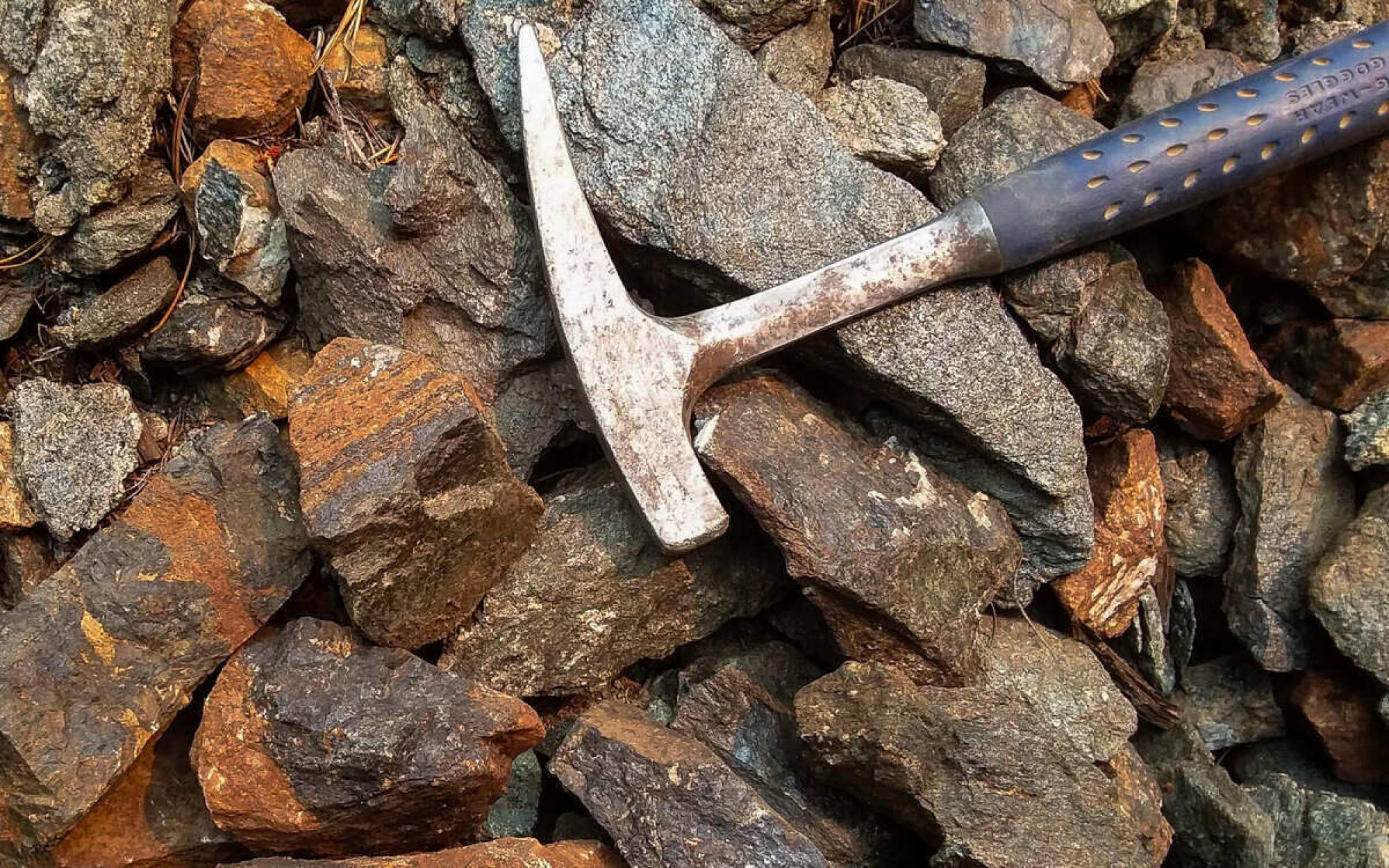The announcement again highlights the tension between economic and technological priorities and environmental concerns, a key challenge confronting US President Joe Biden’s efforts to achieve national self-reliance in the production of sensitive technologies.
A critical mineral, gallium is essential for producing semiconductors, radar and radio communication devices, smartphones, satellite systems, solar panels, next-generation weapons, and fast-charging devices for electronics such as phones, laptops and also electric vehicles. It has gained the world’s attention since Beijing, which enjoys a near monopoly, imposed restrictions on its export in August in response to US bans on exporting specific advanced semiconductor technologies to China.
China supplies nearly 98 per cent of the planet’s refined gallium. In contrast, the US is completely dependent on foreign sources since it ceased its own gallium production in 1987. The US Department of Energy’s list of critical minerals identifies gallium as a mineral commodity critical to the US economy and national security, while in July 2023, the Pentagon admitted that it held zero inventory reserves of gallium.
Dustin Mulvaney, an environmental studies professor at San Jose State University in California, said that the new gallium claims could be “very meaningful” for the US.
Mulvaney, who has testified before the House Committee on Science, Space and Technology on establishing a US supply chain of critical minerals, said that the concentration of these elements in China was not only a geopolitical concern but also a “geographic bottleneck globally”.
China’s international exports of gallium plunged to zero due to new controls in August and September; even in October and November, only a small amount left the country.
Gallium is not naturally occurring but is typically found in low concentrations within ores of other metals, including aluminium, zinc and copper. Most gallium is obtained as a by-product during bauxite processing, with the remainder coming from zinc-processing residues.
According to the US Geological Survey, most bauxite deposits in the US are unsuitable for alumina production owing to their high silica content. The agency reported in 2023 that though some domestic zinc ores could be a significant resource, no gallium is now recovered from domestic ores.
That’s because the processing of these elements can be expensive, technically complex, energy-intensive and environmentally problematic.

But James Hedrick, the US Critical Materials president, claims that “not only is our gallium high grade, but we are also confident that we will be able to create a separation process that will be environmentally respectful”.
Hedrick, a former USGS rare earth commodity specialist, added that his company “looks forward to being the primary gallium producer” in the US.
In December, US Critical Materials entered into an agreement with the Idaho National Laboratory to develop an “environmentally responsible” technology for processing rare earths, including gallium separation.
However, environmentalists remain unconvinced. The Bitterroot is renowned for its trout fishing and is popular among anglers.
Larry Campbell, a former exploration geologist based in Montana, contended that “a worse location would be hard to find”.
“Rare earth mining is notoriously toxic. And not just the mining, the processing … there’s quite the witch’s brew of chemicals that’s used for that,” Campbell, now conservation director for Friends of the Bitterroot, said.
The exploration site is located near headwaters of the Bitterroot River, and Campbell said that while the laboratory was trying to develop a “less toxic process” it was still not “benign” and “there would be lots of chemicals involved”.
Other than gallium, the company describes the area as a “promising source” of at least 13 critical minerals. In January, it shared plans on its website to begin exploration work by summer – including reopening old forest roads and constructing new access roads, and building drill-pads.
The plans have alarmed conservations groups. In February, more than a dozen local and national organisations wrote to Bitterroot’s district ranger Dan Pliley, expressing their apprehensions about risks to several endangered species, potential impacts on water quality and the local economy.
The letter said that the company’s webpage describing the plans was “abruptly” taken down, “which not only decreased the already stymied ability for the public to stay informed, but also contributed to the public distrust of company”.
Campbell said that the letter had not elicit a response either from Pliley or US Critical Minerals.
A public relations specialist working for US Critical Materials said the company “does not believe there will be any environmental impact during our exploratory work at Sheep Creek this summer” since no “mechanised” equipment would be used.

A US Forest Service spokeswoman confirmed that the agency received a proposal last week for exploration activities over the summer, adding that the current approvals only allow use of hand tools for sampling and geological mapping, not drilling or mining.
The “initial exploration phase”, she said, would assess the presence of valuable minerals to determine if mining is feasible. If a potentially viable resource is discovered, the company’s mining plans would be evaluated to prioritise public health and environmental safety.
Montana has a long-standing history with mining and its environmental challenges.
In the mid-19th century, the discovery of gold attracted thousands to the region, driving advancements in mining techniques. By the early 20th century, Montana emerged as a leading producer of copper through extensive mining and smelting operations. The state also saw significant mining activity in silver and lead-zinc operations too.
However, by midcentury, numerous operations began to decline, because of economic factors, advancements in mining technology and stricter environmental regulations. The failing sector also left a legacy of environmental clean-up, including acid mine drainage and pits contaminated with toxic chemicals and heavy metals.
In California, a lithium gold rush at the edge of a dying sea
In California, a lithium gold rush at the edge of a dying sea
Even so, Washington has shown renewed interest on developing domestic sources of critical materials to reduce reliance on China.
On Wednesday, the House passed the bipartisan Mining Regulatory Clarity Act of 2024 – sponsored by Representatives Mark Amodei, a Nevada Republican, and Mary Peltola, an Alaska Democrat.
If approved by the Senate and signed into law by Biden, the act would allow miners to “use, occupy, and conduct operations on public land regardless of whether a mineral deposit has been discovered on the land”. These exploratory-related operations include construction of roads and other mining infrastructure activity.
“Securing our domestic mineral supply chain is not only critical to our nation’s economic success, but to our national security”, Amodei said after the passage, contending that the measure would restore clarity, enabling essential mining projects to advance without delay.
“We’re going to get rid of internal combustion. Everybody’s going to drive an EV. And we’re not going to mine anything to create the components that go into that EV,” Representative Bruce Westerman, an Arkansas Republican who chairs the House Natural Resource Committee, told a hearing.
“It just doesn’t work that way. It’s a ‘not in my backyard’ mentality. That is forcing our supply chains more and more to China who has gone out and hoarded resources from around the world,” he added.

In a joint statement, Senators James Risch, Republican of Idaho, and Catherine Cortez Masto, Democrat of Nevada – both mining states – called for the Senate to move quickly on the bill. “I strongly urge Leaders Schumer and McConnell to bring this bill to the Senate floor for full consideration and passage,” Risch said.
Biden has expressed opposition to the bill, saying it would empower private speculators to influence the use of public lands with minimal mineral potential, undermining efforts to maintain robust environmental, sustainability, and community engagement standards.
Most gallium worldwide, regardless of its origin, is typically sent to China for processing. Mulvaney of San Jose State suggested that rather than opening new mines, the most effective approach to reduce dependence on foreign sources would be to reprocess the mineral from waste.
“The United States doesn’t recycle any gallium. We don’t have an electronics waste policy in the United States. So we ended up landfilling quite a bit of gallium and germanium”, Mulvaney observed.
Tom Moerenhout of Columbia University’s Centre on Global Energy Policy noted that while the imperative to decrease reliance on China is a significant motivator for US policy, “permits are not simply granted because of geopolitical realities”.
“Local, state-level, and federal permits will take time, so production is not for tomorrow,” he added.
Because of the toxic chemicals used in extracting and processing critical minerals, Moerenhout said, adherence to the highest industry standards for managing waste water was essential. Transparent planning with local communities was also imperative, he said.
Campbell, the conservationist, said that US Critical Materials had not been forthcoming in sharing the details of how its proposed activities could affect the local environment. He said he had not encountered a single local resident who supported this mine.
“They can just realise what they’re up against here. And just concede that it ain’t gonna happen,” he said of company officials, adding that locals were ready to fight against mining “as long as they can”.

